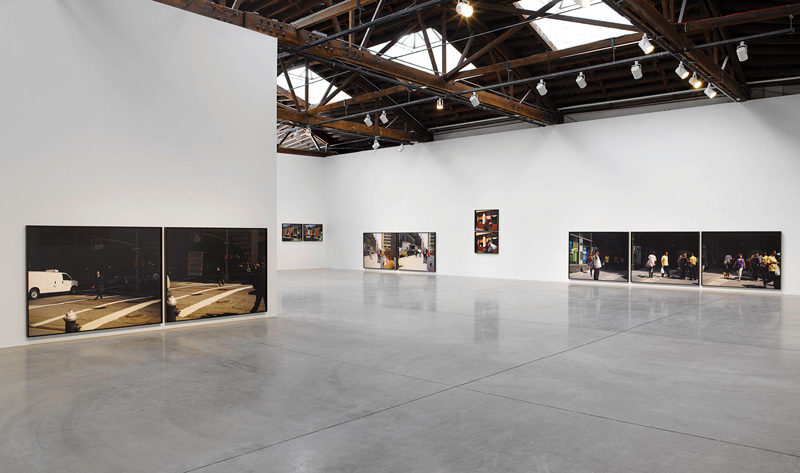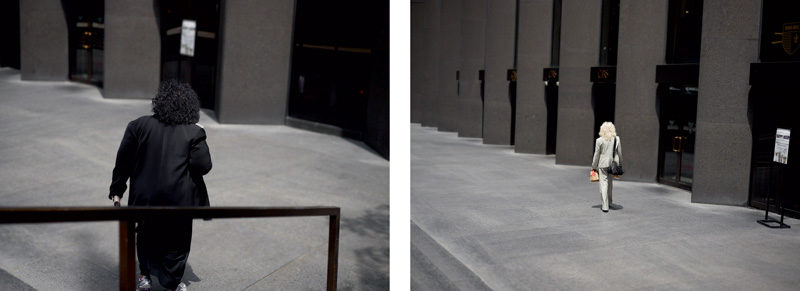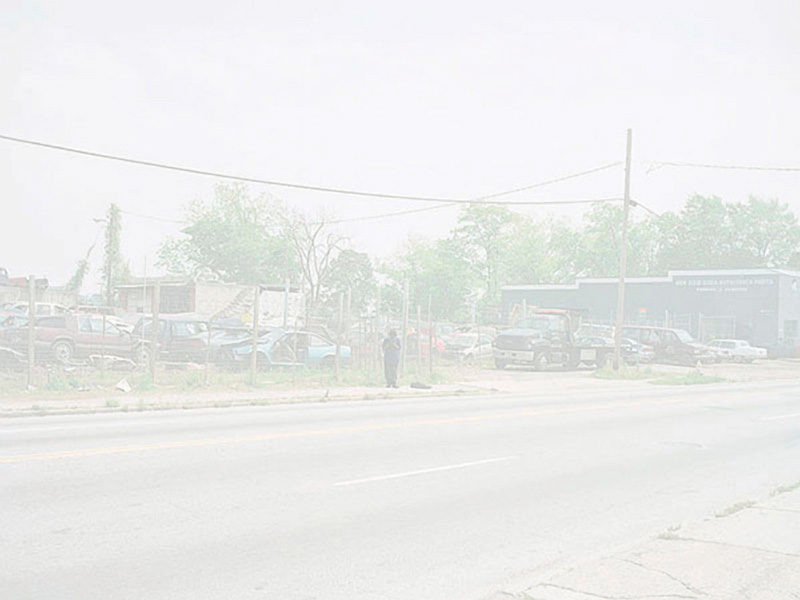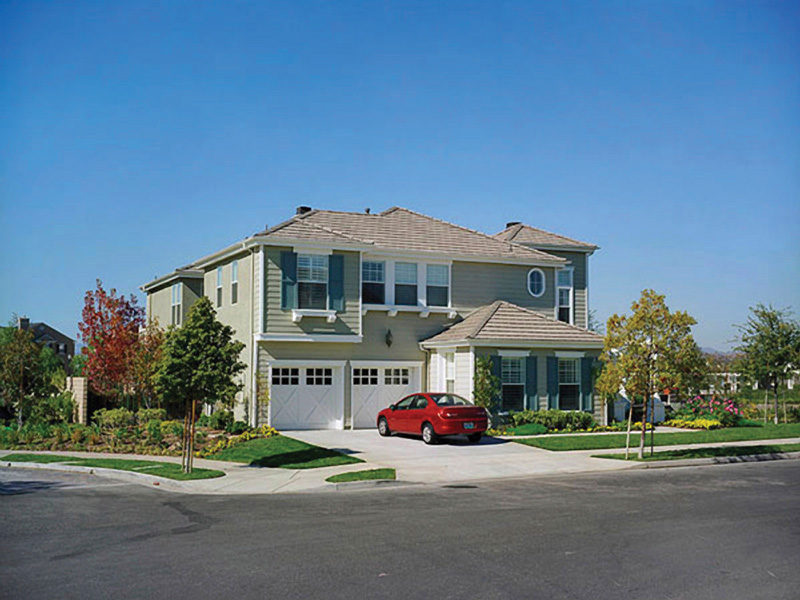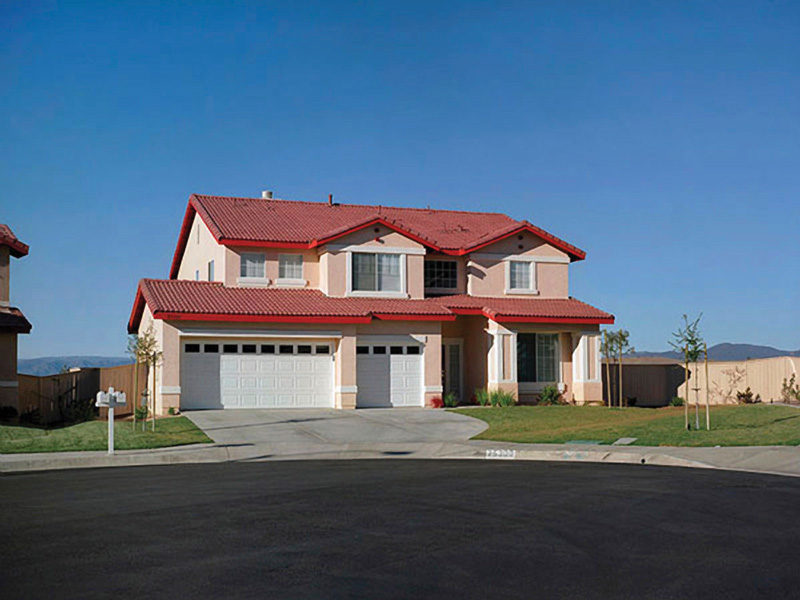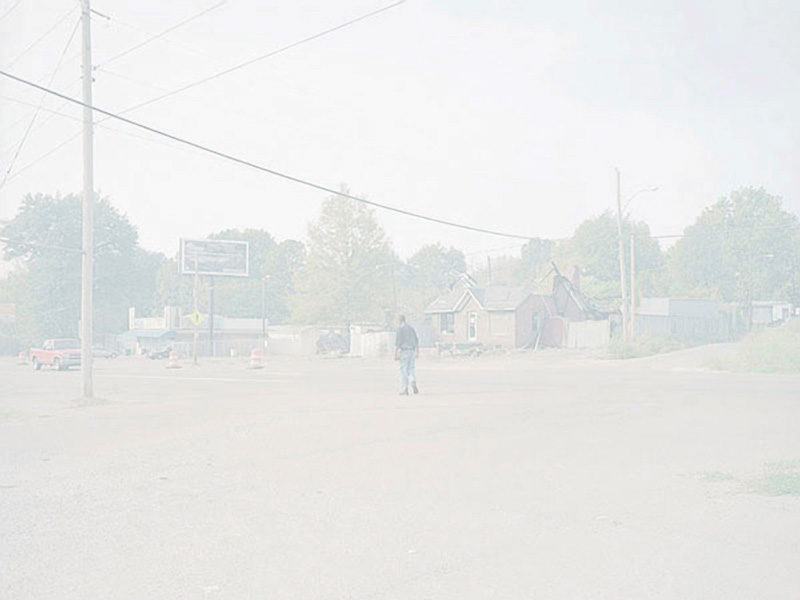[Fall 2012]
Less than one year after the mid-career retrospective presented by the Whitechapel Gallery in London and simultaneous with Graham receiving the prestigious 2012 Hasselblad Award 2012, the exhibition “The Present” testifies to the maturity of an artist who has long been eminent. Active since the early 1980s, Graham is a member of the generation of English photographers who, with American colourists William Eggleston and Stephen Shore in the 1970s, contributed to the artistic legitimization of colour photography. As a counterweight to the corrosive gaze cast upon English society under the reign of Margaret Thatcher by his contemporaries Martin Parr and Richard Billingham, Graham’s more conceptual work was envisaged, rather, as a long conversation with the different traditions of the photographic medium.
Having cast an eye in his early career to the austere aesthetic of Becher and new American topographic photographers (House Portraits, 1979), Graham undertook a gradual deconstruction of the documentary genre, which he seemed to want to free from its dependence on current events. At first timidly (A1 – The Great North Road, 1981–82), then more explicitly (Beyond Caring, 1984–85; Troubled Land, 1984–86), he established the bases for an approach addressing the problematics of photographic representation of the world by giving his series conceptual frameworks that were less and less restrictive. As his projects progressed, his concerns came more to resemble those of a philosopher of history, who draws from the analysis of an isolated fact the possibility of a more universal reflection on the conditions for the possibilities of history as a story articulated over the long term. Thus, for Graham photography takes on the appearance of an activity speculating on its own terms, but also, since this activity is inextricably linked to the world in which it is practised, on that world’s historicity.
In the late 1980s and early 1990s, when Graham was witnessing the crumbling of the Eastern Bloc, he seemed to wonder about a certain historical burden borne by Europe (New Europe, 1988–92), Japan (Empty Heaven, 1989–95), and Ireland (Ceasefire, 1994). In this transitional context, he often figured individuals as if suspended in a present on which they seem to have little grasp. The impenetrable psyches of these people, captive to the hypnosis of a television set or the trance of a discotheque (Television Portraits, 1986; End of an Age, 1996–98), seemed accessible to Graham only in the pornographic graffiti and spittle soiling the walls of public toilets (Paintings, 1997–99).
In the late 1990s, Graham, who eventually moved to New York, turned his eye from Europe to the United States and undertook a photographic trilogy focusing both on American society and on the issue of narration in photography. The first chapter in the trilogy, American Night, addressed social and economic inequalities dividing the United States and perpetuating cleavages between black and white citizens.2 Rather than highlight this problem through documentary contextualization, Graham brings three distinct photographic strategies into dialogue.3 Condensing the premise of his series into a schematic conceptual framework that simultaneously expresses the socio-economic structure of inequality and excavates the foundations of photographic narration, he seems to engage in a critique of certain American social mythologies, as Barthes would say.4 Should the diaphanous veil impeding the reading of these portrayals of a society’s wanderings be understood as a metaphor for the blindness of the many citizens who subscribe wholeheartedly to the American dream? One thing is certain: in American Night, Graham is able to designate narration as a sort of zero-level, from which he may now work.
With A Shimmer of Possibility, a large body of work of about 170 images detailing the banality of existence in the homeland of Robert Frank, Lee Friedlander, and other photographers who had forged the mythic tradition of the social landscape, Graham began to reconstruct the edifice of photographic narration on the conceptual foundation laid in American Night. In the second part of his trilogy, Graham drifted from one American city to another, dwelling on often-anecdotal situations. As a flâneur, he carefully described the places that he visited and shadowed people whom he met on his way. Within this heterogeneous corpus, the series intertwine with and straddle each other as Graham builds little stories with no denouements, the plots of which are slowly revealed by his careful attention to the sequence, format, and display of the images on the walls of the gallery or in the pages of the book.5 Here, he aligns himself with a homeless person taking stock of his few possessions and a girl playing with a doll on the sidewalk; there, he tracks a couple bringing home their shopping, paying almost obsessive attention to the cases of soft drinks that the man is carrying on his shoulder. It is as if the shimmering suggested by the series title were that of the infinite narrative possibilities reflected in each image, as infinite as the variety of goods offered to shoppers in the big-box stores where Graham photographs.
Having, in this way, deconstructed and reconstructed the mechanics of narration, Graham concludes his trilogy with The Present, a body of work that, in its gallery version, comprises just over thirty medium-and large-format photographs.6 After spending almost a decade surveying the American territory to gain a comprehension of the workings of the social landscape, Graham decided to confine his field of action to New York, a mythic city of the history of photography if ever there was one. This well-considered choice makes it difficult to think of the artist’s intention as ambiguous. Probably, he aspires to nothing less than bringing his concept of narration into contact with the no-less-mythic genre of street photography in order to question the dogma of the decisive moment. One might have suspected that this notion, whose critical fortunes have not been in doubt since Henri Cartier-Bresson, would not satisfy Graham’s narrative ambitions in that they condemn narration to being no more than the flattening of a story through its concentration in a single image.
Graham raises this question in a series of horizontal and vertical diptychs and triptychs describing, as in A Shimmer of Possibility, anecdotal situations. But rather than deploying the story of these situations in a large number of images, he inflects it quickly in just two or three shots. To do this, he employs two narrative strategies. In the horizontal sequences he uses shallow depth of field. This allows him to isolate an element around which he organizes the composition of a first image; then, in a second – and sometimes a third – image, he transfers the focus to other elements of the scene, to which the viewer’s attention is also directed. The effectiveness of this strategy is strengthened by the hanging of images just a few centimetres above the gallery floor. In the vertical groupings, which are all diptychs, the images are not organized sequentially but proceed through the coincidental placement of elements that are substituted from one image to the other. Graham thus proposes micro-stories re-creating the experience of a stroll on New York asphalt, which may also be read as mises en abyme of the practice of street photography.
Given their anecdotal nature, the situations described in The Present may seem to have been arbitrarily gleaned by the photographer.Although none of them have the decisive moments so dear to Joel Meyerowitz or Nick Turpin, we nevertheless recognize, if we are familiar with Graham’s preceding series, recurrent themes in his work. Already present in American Night, the intriguing themes of the one-eyed and the blind not only testify to the coherence of his trilogy but bring out the depth of his questioning of photographic narration. This questioning, eminently current because it contributes to an updating of the language of documentary photography, justifies the privileged place that the English Graham holds in the American photographic landscape, alongside such major photographers as Alec Soth and John Gossage and accounts for the passion aroused by these artists’ works and books, which are the object of aggressive speculation. Graham’s book Films7 sold out barely a year after it was published, and we can wager that the highly anticipated paper version of The Present will have the same fate.
Translated by Käthe Roth
1 Paul Graham, The Present (London: mack, 2012).
2 Paul Graham, American Night (Göttingen: Steidlmack, 2003).
3 Discussion of these strategies, which are both obvious and complex, is, unfortunately, not possible in the space allowed for this article. For an idea of these see Graham’s publication or his Web site, www.paulgrahamarchive.com/americannight.html (consulted 7 May 2012).
4 Roland Barthes, Mythologies (Paris: Éditions du Seuil, 1957).
5 Paul Graham, A Shimmer of Possibility (Göttingen: Steidlmack, 2009 [2007]).
6 The book includes more images.
7 Paul Graham, Films (London: mack, 2011).
Art historian Alexis Desgagnés lives and works in Quebec City, where he divides his time among writing, curating, and photography. Author of a doctoral dissertation on Russian revolutionary visual propaganda, his current research concerns mainly the history of past and present photography. He is also communications coordinator at VU, centre de diffusion et de production de la photographie.
Purchase this article

